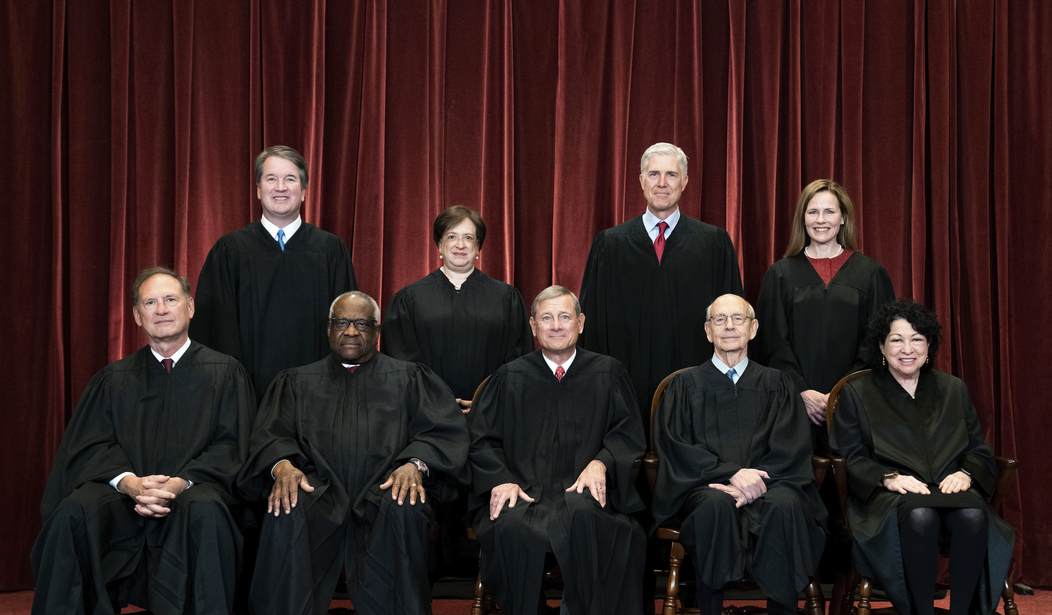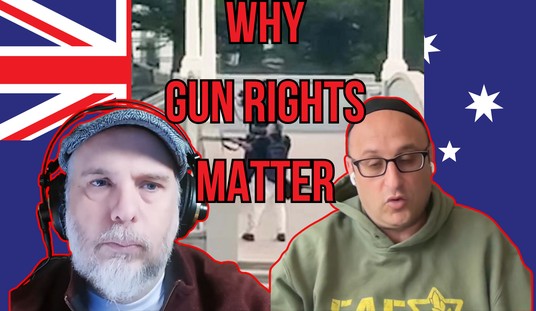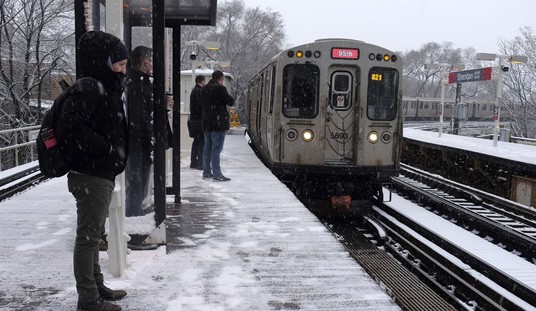We’ve seen some surprisingly harmonious decisions from the Supreme Court over the past couple of weeks, including a 9-0 decision in favor of religious liberty and a 7-2 verdict rejecting a challenge to the Affordable Care Act for lack of standing handed down on Thursday. Behind that newfound comity, however, is conflict… at least according to POLITICO, which suggests in a new piece that the Court isn’t split 6-3 between conservative and progressive justices, but is actually split 3-3-3; with a “moderate” conservative bloc developing alongside the three liberal justices and three stalwart conservatives.
Some liberal legal commentators noted that the most carefully dissected rhetorical sparring is now taking place among members of the new six-justice conservative majority, with the three remaining liberal justices often left as mere spectators.
“We’re arguing about the battles among the conservatives and when that coalition breaks and where it goes,” lamented Harvard Law School lecturer Nancy Gertner, a former federal judge. “It’s a dramatic difference from only two or three years ago.”
Leading the charge from the right in both cases Thursday was Justice Samuel Alito, who penned caustic opinions taking his colleagues to task for issuing narrow rulings that seemed to him to be aimed at defusing political tensions rather than interpreting the law.
“After receiving more than 2,500 pages of briefing and after more than a half-year of post-argument cogitation, the Court has emitted a wisp of a decision that leaves religious liberty in a confused and vulnerable state. Those who count on this Court to stand up for the First Amendment have every right to be disappointed—as am I,” Alito wrote in the foster-care case, notwithstanding the Catholic charity’s unanimous victory.
In the Obamacare dispute, Alito sarcastically accused the majority of repeatedly indulging in flights of legal sophistry to avoid the politically unpalatable step of striking down the landmark health care law.
“No one can fail to be impressed by the lengths to which this Court has been willing to go to defend the ACA against all threats,” Alito wrote. “A penalty is a tax. The United States is a State. And 18 States who bear costly burdens under the ACA cannot even get a foot in the door to raise a constitutional challenge. Fans of judicial inventiveness will applaud once again. But I must respectfully dissent.”
Some court-watchers say that Chief Justice John Roberts, along with Associate Justices Brett Kavanaugh and Amy Coney Barrett, are adopting narrow decisions that may address the specific question before the Court but fail to reckon with the underlying issues involved in these cases. Justice Alito certainly felt that SCOTUS didn’t go far enough with the “wisp of a decision” in Fulton v. Philadelphia, arguing that the Court’s opinion can be easily circumvented by the city of Philadelphia in the future.
If, in fact, this emerging split between the six conservatives on the Court is real, what kind of impact could it have on the upcoming case challenging New York’s “may-issue” carry laws? Is there any evidence that the Roberts wing of the Court may already be trying to narrow the case and the impact of the ultimate outcome of the case?
In short; maybe.
Remember, the Supreme Court actually tweaked the question raised by plaintiffs in the case. In their cert petition, the New York State Rifle & Pistol Association asked the Court to answer this question:
Whether the Second Amendment allows the government to prohibit ordinary law-abiding citizens from carrying handguns outside the home for self-defense.
When the Court accepted the case, however, justices decided that they would answer this question instead:
Whether the State’s denial of petitioners’ applications for concealed-carry licenses for self-defense violated the Second Amendment.
Now, it’s possible to argue that these two questions may be posed differently but still address the same underlying question, but it’s also easy to make the case that the question posed by SCOTUS would allow the Court to deal with New York’s “may issue” laws without delving into broader issues like bans on open carry, “shall issue” licensing laws, or even “may issue” laws themselves. Law professor Josh Blackman wrote back in April soon after the Court granted cert in NYSPRA v. Corlett that he was concerned about the reframing of the question.
Ultimately, I am conflicted about this grant. Part of me should be ebullient that the Court finally granted a real gun case. Yet, this strange rewriting of the QP [question posed] has tempered my enthusiasm. I am jaded after thirteen years of being burned in Second Amendment cases. This grant may be the last time a nine-member Court decides a Second Amendment case. Any punt here will sweep Heller to what Justice Scalia called the “the dustbin of repudiated constitutional principles.”
I don’t think that the Court is going use NYSPRA v. Corlett to strike down all carry licensing laws throughout the United States; “may-issue” and “shall-issue” alike. My hope is that there are at least five justices in favor of declaring New York’s licensing regime unconstitutional, but it’s certainly possible that we could see a 6-3 ruling declaring that the denial of these specific applications violated the Second Amendment without the Court addressing the larger implications of “may issue” licensing laws in New York and a handful of other states.
Of course all this is speculation at this point, and I’m still reasonably confident that after more than a decade of silence, the Supreme Court will issue a substantive decision in a Second Amendment case and not a “wisp” of an opinion that leaves states like New York with the power to deny citizens the right to bear arms based on subjective standards like being able to demonstrate “suitability” or “good cause.” Still, I’d be lying if I said that a part of me wasn’t concerned that, in the interest of finding common ground, the Court will end up watering down what should be a decision that does for the right to bear arms what the Heller decision did for the right to keep them.









